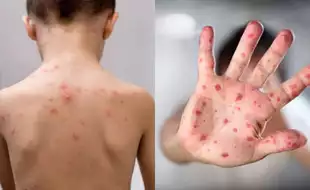News
Thyroid To Hormonal Imbalance: What Your Hair Fall Patterns Say About Your Health

Thyroid To Hormonal Imbalance: What Your Hair Fall Patterns Say About Your Health (Image Credits: iStock)
We have bad hair days but if they persist for long, it may be a serious cause of concern. Hair loss is more than just a cosmetic concern. For many, it serves as an indicator of underlying health issues, sometimes pointing to more serious conditions that need attention. According to Dr Ruben Bhasin Passi, Consultant Dermatologist at CK Birla Hospital in Gurugram, changes in hair texture, density, and shedding patterns are ways in which your body gives clues about its internal state. Here, Dr Passi shares some key health issues related to hair loss.
1. Thyroid Disorders
One of the most common health conditions associated with hair loss is thyroid dysfunction, particularly hypothyroidism (an underactive thyroid) and hyperthyroidism (an overactive thyroid), Dr Passi shares. The thyroid gland is crucial in regulating metabolism, including the hair growth cycle. When thyroid hormones are imbalanced, they disrupt the normal hair growth phases, leading to excessive shedding and thinning, primarily on the scalp and sometimes on the eyebrows.
Hair loss due to thyroid imbalance is typically diffuse, meaning it occurs across the entire scalp rather than in patches. Those experiencing this type of hair loss often observe a decrease in hair density rather than bald patches.
2. Nutritional Deficiencies
A diet lacking essential nutrients can impact hair strength and growth. Key vitamins and minerals, such as Vitamin B12, Vitamin D, iron, and zinc, are essential for maintaining healthy hair follicles. When these nutrients are deficient, hair may become fragile, dull, and more prone to falling out.
Vitamin B12: This vitamin is essential for cell division and red blood cell production, which helps provide oxygen to hair follicles. A deficiency in B12 can lead to hair thinning and sluggish hair growth.
Vitamin D: Low levels of Vitamin D can impair the hair follicle’s ability to grow new hair. This vitamin plays a role in the regeneration of hair follicles, meaning its deficiency can hinder hair recovery after shedding phases.
Iron and Zinc: Iron is vital for red blood cell production, which helps transport oxygen to cells, including hair follicles. Zinc, on the other hand, contributes to the structural integrity of hair. Both minerals are essential, and deficiencies in either can lead to visible hair loss.
3. Stress and Telogen Effluvium
Stress is a well-known contributor to hair loss. When the body experiences physical or emotional stress, it can lead to a condition known as telogen effluvium, Dr Passi explains. In telogen effluvium, a high number of hair follicles enter the resting (telogen) phase simultaneously. This causes a sudden increase in hair shedding, which can be alarming.
While telogen effluvium is generally temporary, chronic stress can exacerbate the issue, leading to long-term hair loss. Stress management techniques, including regular exercise, mindfulness practices, and adequate sleep, can play a significant role in promoting hair recovery. In cases of severe stress-related hair loss, seeking support from mental health professionals can be beneficial.
4. Hormonal Imbalances, Including PCOS
Hormonal fluctuations are another major factor influencing hair loss, especially in women. Conditions such as polycystic ovary syndrome (PCOS) lead to an overproduction of androgens, male hormones that can cause scalp hair to thin while promoting hair growth in other body areas, like the face.
High androgen levels can shrink hair follicles, resulting in a pattern of hair loss known as androgenetic alopecia. This form of hair loss happens by thinning along the top of the scalp. Hormone-balancing treatments, dietary changes, and sometimes medications like anti-androgens can help manage hair loss associated with hormonal imbalances.
5. Autoimmune Disorders and Alopecia Areata
Autoimmune diseases like alopecia areata involve the immune system attacking healthy cells, including those in hair follicles. This results in patchy hair loss on the scalp and other body areas. Alopecia areata can appear suddenly and vary in severity, from small bald patches to more widespread hair loss.
Managing autoimmune-related hair loss involves addressing the underlying immune response. Treatments for alopecia areata may include topical or injectable corticosteroids, immunotherapy, and sometimes biologic drugs that modulate the immune system.
6. Anaemia
Anaemia, often caused by a lack of red blood cells due to iron deficiency, is another condition commonly associated with hair loss. Hair follicles need a steady supply of oxygen to remain healthy and produce new hair. When red blood cell counts are low, oxygen delivery to hair follicles diminishes, leading to weaker strands and increased shedding.
Anemia-induced hair loss usually appears as overall thinning rather than distinct bald patches. Replenishing iron levels through diet or supplements can help restore hair vitality. Incorporating iron-rich foods like lentils, beans, and lean meats into meals can also be beneficial.
Get Latest News Live on Times Now along with Breaking News and Top Headlines from Health and around the world.
Our Blogs
Our Recent News

Can You Get Chickenpox As An Adult? Know The Risk Factors And Symptoms Of This Highly-Contagious Virus
After your body fights off the infection, the virus stays hidden in your nerve cells and can reactiv...

Can Weightlifting Be The Secret To Cleaner Lungs? Here’s What Experts Say
Can Weightlifting Be The Secret To Cleaner Lungs? Here’s What Experts Say (Image Credits: iStock) A ...

Is Your Arm Pain Hiding a Serious Injury? The Truth About Brachial Plexus Damage and When You Must Seek Help!
Image - Canva The brachial plexus is a network of nerves that originate near the neck and shoulder. ...

